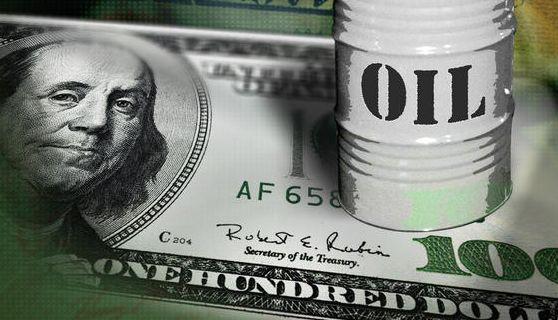
Date: 2025-11-19 Page is: DBtxt003.php txt00011259
Money and Banking
US dollar
Is the Petrodollar system sustainable? by Eddie Garcia, Director at New Society Initiative
Burgess COMMENTARY
Peter Burgess
Is the Petrodollar system sustainable?

The greatest safeguard to American influence and liberal order is the sustainability of the petrodollar system. If this system fades in favor of a global basket of currencies or a Yuan dominated reserve, American influence will diminish with it. The petrodollar system was established as a reactionary measure of the 1973 oil crisis. A deal with Saudi Arabia was secured that in exchange for only accepting U.S. dollars for its oil, the United States would reinforce its regime through military protection. Other oil exporting nations, as a matter of necessity, followed suit and subsequently established the dollar as the global reserve currency for transacting all energy exports and most other forms of trade.
Under the current system, oil exporting countries settle their energy transactions exclusively in U.S. dollars which serves to stimulate demand for dollars. This demand essentially gives the United States a permission slip to print more money. Since all nations have an insatiable need for oil consumption, this forces them to maintain a significant reserve of U.S. dollars. With regard to OPEC nations with a huge reserve of dollars, they are encouraged, as a matter of necessity, to reinvest the capital in U.S. securities, essentially buying and holding our debt. According to a recent annual report published by the Bank of International Settlements, the U.S. dollar is present in roughly 87% of transactions worldwide and about 50% of transactions are charged and paid exclusively in dollars.
Admittedly, the petrodollar system serves American interest but at the determinant of other nations. However, a few nations such as China and Russia are beginning to move away from trading energy exclusively in U.S. dollars. Vladimir Putin while speaking at a conference on world order in Sochi stated that, “The prosperity of the United States depends greatly on its investors, those that hold American state securities and the dollar,” and, “We see even more nations trying to reduce their dependency on the dollar by establishing new reserve currencies and settlement payment systems.” In a landmark deal in 2014, Russia secured a $400 billion energy trade agreement to supply natural gas to China with settlements in each other’s currencies, not U.S. dollars. Data shows that the U.S. has been experiencing a gradual decline in foreign reserve of our currency at a current rate of 63%, down from a high of 71% in 1999. Strategic posturing by these global players will only serve to further drive down the global reserve of dollars.
Interestingly, many OPEC nations may be waiting for cues from Saudi Arabia before they too take the leap. Although, Saudi Arabia might be signaling a transition away from the petrodollar with its reduction in U.S. reserves. According to data provided by the Saudi Arabian Monetary Agency, the central bank of the Kingdom, foreign assets reserves, predominately US dollars, has dropped from a peak of $737 billion to a current reserve of $635 billion. Many authorities attempt to explain this away as a reactionary measure by a Kingdom coping with the falling price of oil while others see this as a political posturing to American inaction in the Middle East. Regardless of the motives, Saudi Arabia and other nations are coming to the realization that the current system simply does not work to their advantage and might start looking to invest elsewhere.
The destabilization of the Middle East and the falling value of oil, coupled with a drastic depletion of oil-exporting nation’s saving reserves is sending their economies in a decline. OPEC and OPEC-dependent nations have few options with regard to curbing economic destabilization. Many might be contemplating a pivot away from the petrodollar in favor of propping up their own currency or that of a nation more favorable to their regime. Conveniently, Russia has moved its strategic military focus to the Middle East, which in addition to bolstering the Assad regime could be acting a signal of support to OPEC nations in the region contemplating a shift or at least an increased diversification of assets.
Though, even with a U.S. monetary hegemony designed to secure American economic stability by passing off inflation, the dollar has lost 93% of its value since 1913. Historically, inflation of the U.S. dollar hovers annually at about 1-2%. However, with a potential de-dollarization movement, the American economic landscape might look completely different post-petrodollar system. For starters, assuming that the U.S. maintained its current rate of spending, it would experience a sharp spike in inflation as the U.S. would no longer be able to pass off inflation to other nations but would have to absorb it internally – leading to hyperinflation.
While the shift in wealth from developed western nations to emerging-market nations cannot be avoided, it could be slowed in order to ensure a more gradual and peaceful transition of power. Therefore, we must refocus our efforts on fostering better relations with China and reminding them that national currencies and exports function much like a see-saw. If China, in partnership with Russia continues moves to supplant the U.S. dollar – it will have a direct correlation to the valuation of their national currency, at a detriment to exports in an already sluggish Chinese economy. Additionally, the United States must realize that while we might have an interest in increasing the valuation of the Yuan in order to bolster our own exports, we must avoid shortsightedness; least we displace our own hegemonic system.
Eddie Garcia is the Founder and Director of New Society Initiative, a grassroots effort advocating for a sustainable global community. He is also a law student at UConn Law and an elected member of Chatham House, Royal Institute of International Affairs.